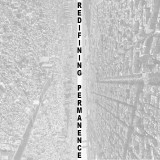At the beginning of the 21st century, the concept of permanence is relative. The economic system plays a catalytic role in the way cities are developing, but at the same time their planning can affect their economy. Contemporary progress requires a review of this fixed building stock, and the integration of spatial variables, time and probability fields into the design. From the micro scale to the city, there is room for concepts, such as permanence, usually understood as an absolute state, subtraction and disassembly, to widen and incorporate these tools. The study attempts to approach these concepts through three sections: To begin with, the concept of permanence, detached from the place and with different perspectives, is examined, redefining the way we perceive it, by distinguishing it into four spheres, those of the absolute and relative, and static and dynamic. Then we move on to Japan, where reference is made to the approach of design, from the traditional architecture and practice of the Ise Grand Shrine to the 1960s Metabolism Movement and the NagaKin Capsule Tower, concluding to the office of Atelier Bow Wow today and the approach of Tokyo, as well as a smaller-scale project of the BMW Guggenheim Lab. In the third chapter, the ideas that prevailed in the West about the concepts of ephemeral or adaptive architecture, as well as the contemporary data, with changes in technology, in the workplace and, generally, in the socio-economic context, affect the way we perceive things . While the rationale of renewal, transformation and replacement is present in the modern world on smaller scales, the changes in our material environment are rapid, there is a hesitation in addressing renewal on the wider scale of the city. Finally, the example of Barcelona as an urban renewal was an attempt to upgrade the quality of urban life, with building subtraction tactics, a renewal strategy that lasted for decades.
